Nawzat Shamdin / January 2023 – Translated by Walaa Rayya
Bahnam Naoum (64 years old) had no idea that the step of displacement he took with his family, fleeing from ISIS, which had seized control of Mosul in June 2014, would lead him far beyond the province of Erbil in the Kurdistan region. He eventually settled in Sweden where he obtained Swedish citizenship.
“We thought it would only be a few days, and that ISIS elements would flee, allowing us, Christians, to return to our work and homes that we left on the right side of Mosul. However, that did not happen, and the option of returning is no longer up for discussion,” says Naoum who recently made a brief trip to Erbil to grant power of attorney to a lawyer for the sale of his house in Mosul.
The man who spent 50 years of his life in the streets of Mosul, hardly knowing any other city, take advantage of his visit to deliver some gifts that his friends, who are residents of Sweden, had sent for their families. He takes out a folded paper from his pocket and waves it, saying, “It contains the addresses of the relatives of the gift senders, who are two Christians, a Yazidi, and a Shabaki.” He then adds with a smile, while returning it to his pocket, “Among them is another Shabaki who, rather than sending something with me, decided to join me on the trip and is currently visiting his family!”
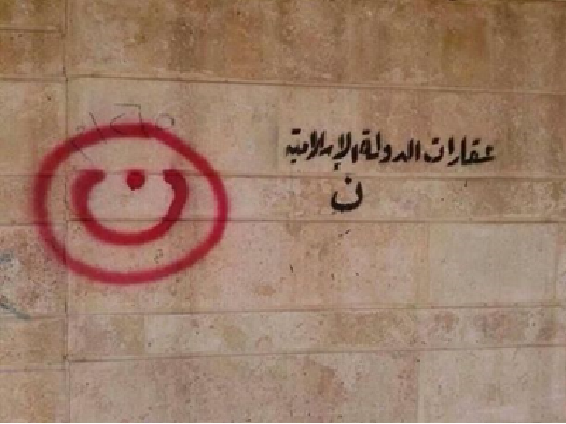
The daily life scene reflects the reality of fragmentation experienced by minorities in Iraq. Between 2004 and 2017, their children were subjected to organized targeting campaigns, resulting in the deaths of thousands of them. The survivors were either expelled from their areas or forced to flee, losing all their possessions, which caused an irreparable demographic change in regions spanning three provinces (Nineveh, Salah Al-Din, and Kirkuk). Hundreds of thousands of them have migrated out of the country, leaving behind their historic lands.
This has led to an unprecedented decline in their numbers, despite the efforts of the Kurdistan Regional Government to protect them and create a haven for the displaced among them, through the enactment of a special law, the first of its kind in the region, known as Law No. (5) of 2015. The law explicitly denounces all forms of discrimination against these components and imposes legal penalties on those who violate it.
The law stipulates that every component has the right to exercise its fundamental rights and freedoms, including freedom of thought, expression, assembly, and the practice of religious beliefs. It prohibits any religious, political, or media incitement that promotes hatred, violence, terrorism, exclusion, or marginalization based on national or religious grounds.
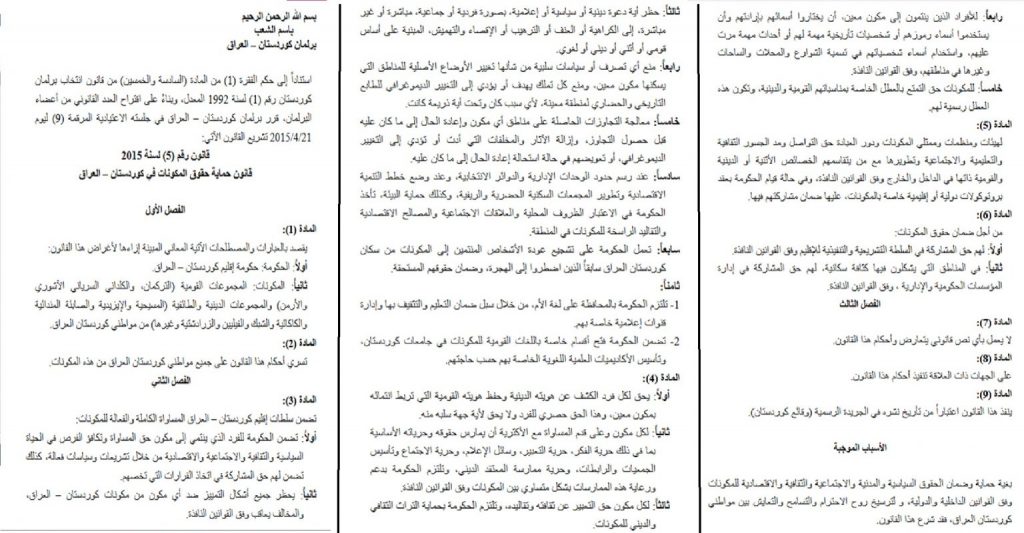
This investigation reveals the distribution map of prominent minorities in Iraq and the extent to which discriminatory policies, killings, and forced displacement have affected their existence. It sheds light on the systematic targeting they have endured over the past two decades, as well as the aspirations of those who remain in the country and the measures taken to protect them, whether by the minority itself or by state security institutions. Ultimately, it explores what can be done to halt their migration and persuade those who have migrated to return.
The horror within the framework of systematic targeting
The story of targeting minorities in Iraq began with the fall of the Iraqi regime on April 10, 2003, and escalated during what is known as the second fall of Nineveh on November 11, 2004. On that day, armed militants from Al-Qaeda seized control of state institutions, including police stations, and established checkpoints in the streets of Mosul, amidst the presence of US forces that were occupying the country but retreated to their bases on that day.
The streets of Mosul, including its main and secondary roads, as well as the surrounding districts, witnessed a frequent occurrence of car bombings and explosive attacks almost every day. Moreover, security personnel were specifically targeted for assassinations. Civilians were subjected to abductions, threats, and killings based on accusations of disbelief, apostasy, collaboration with occupying forces, or failure to pay royalties.
According to researcher Adel Kamal, armed groups and individuals propagated the belief in mosques that the US invasion of Iraq was a “Crusader invasion” to annihilate Muslims, particularly in Iraq. As a result, Christians were among the first minorities to be targeted.
As an example of this, there is a CD distributed by Al-Qaeda in Mosul after 2004 that contained a video clip showing their members beheading two Christians and placing their heads in metal buckets. A masked individual stated that their alleged crime was collaborating with US forces in the Presidential Palaces area within Mosul.
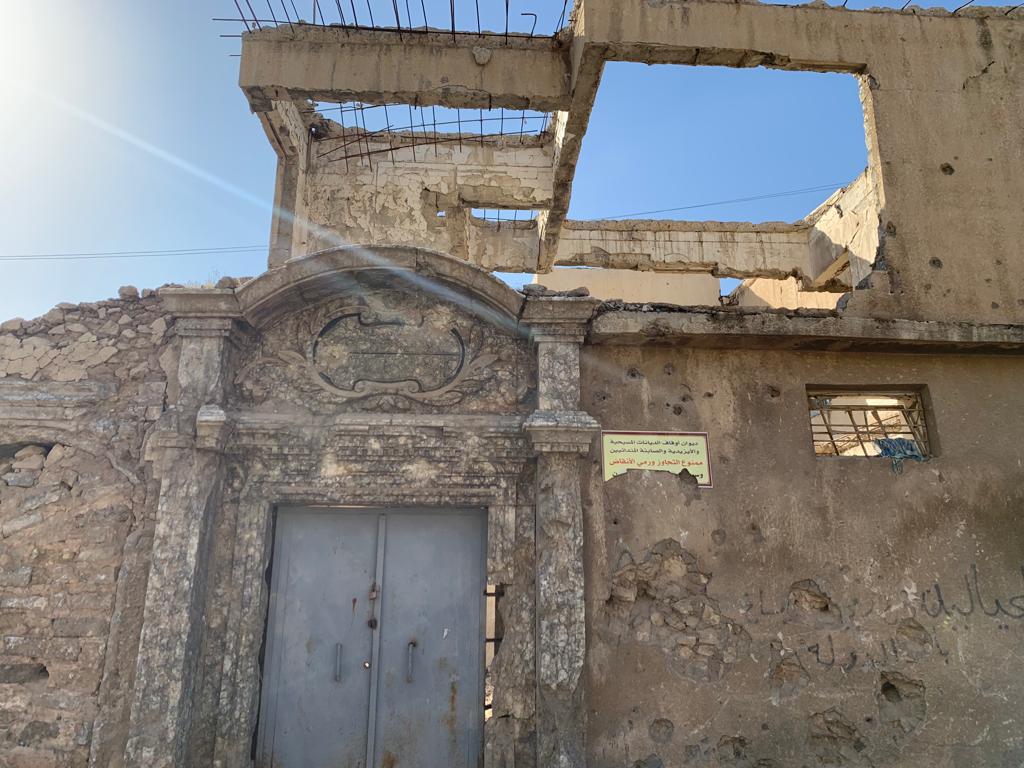
According to Kamal, these targeted attacks aimed to instill fear and resulted in the displacement of thousands of Christians, both in Mosul and other Iraqi cities. They sought refuge in Christian towns located in the districts of Hamdaniya and Tall Kayf in the Nineveh Plains, as well as in the Kurdistan Region, where armed extremist groups were not active.
He also states that targeting minorities has become a phenomenon despite the members of these minorities not being involved in the sectarian Shia-Sunni conflict or holding arms. It appeared as campaigns to empty entire cities of them: “Each time a particular minority was targeted, Christians would be killed or kidnapped, and then it would happen to Yazidis, Shabaks, Kurds, and so on.”
According to unofficial sources, the estimated number of Christian victims in Iraq, as a result of armed groups’ targeting from 2003 to 2014, is around 1,000 individuals. Among them were several clergymen, such as Archbishop Paulos Faraj Rahho, the head of the Chaldean Catholic Church in Nineveh, who was killed in Mosul on March 13, 2008. Another example is Reverend Youssef Adel Abudi, the pastor of the Assyrian Church in Baghdad, who was killed in his home in front of his family members in April 2008.
Due to the absence of an official census in Iraq since 1988, the statistics regarding the number of Christians and other groups are approximate. Louis Marqus Ayoub, a founding member of the Iraqi Minorities Alliance, mentions that there were approximately one and a half million Christians in Iraq until April 2003. However, their numbers have significantly decreased to around 400,000 individuals.
Through our interactions with church representatives, relevant organizations, and extensive data collection on Christians of various denominations in Iraq (including Assyrians, Syriacs, and Chaldeans), it has become evident that the actual number of remaining Christians is considerably lower than Ayoub’s claim. The current estimate stands at a mere 260,520 individuals, signifying that more than 80% of Christians have departed the country.
The Christian presence after 2003 was concentrated in the provinces of Baghdad, Nineveh, and the Kurdistan Region, with smaller numbers in Basra and Kirkuk. However, their largest proportion was in Mosul and their historical towns in the Nineveh Plains, such as Qaraqosh in the Hamdaniya district, as well as the towns of Bartella, Alqosh, and the Talkeef district.
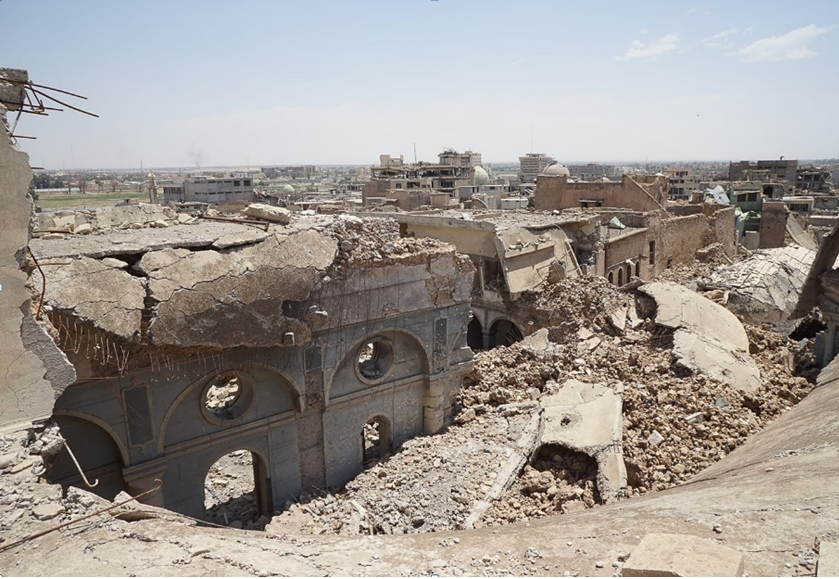
Approximately 20,000 Christians, or around 5,000 families, used to live in the city of Mosul. assuming an average of 4 individuals per family. There were approximately 30,000 families in the villages and towns of the Nineveh Plains, assuming an average of 4 individuals per family. However, these numbers significantly decreased following the control of Mosul by ISIS in the summer of 2014. At that time, there were only 1,000 Christian families in Mosul and 15,000 families in the entire Nineveh Plains. They also fled to the Kurdistan Region within a few weeks, leaving Nineveh completely devoid of Christians for the first time in centuries.
Georges Touma, a writer specializing in minority affairs, comments: “The situation was not entirely clear for many in Nineveh at that time. The sudden withdrawal of the Iraqi army, local police, and federal forces created a state of chaos in Mosul and the surrounding towns. ISIS spread the false narrative that its members were simply tribal rebels who would withdraw after completing their mission, handing over power to a government chosen by the province’s residents.”
He adds, “However, it was a deception. The organization distributed paper leaflets on July 12, 2014, giving Christians the choice between staying and paying royalties to the organization, leaving, or being killed. Consequently, Christians chose to leave, and the organization confiscated all their belongings. Its members wrote the letter ‘N’ in red on the walls of their houses, which is the first letter of the word ‘Nasrani’ (Christian), indicating that the property was seized.”
Over the years, Christians have fled to the Kurdistan Region, and from there, many of them chose to go into exile. The return of internally displaced Christians in Iraq to their original areas in the Nineveh Plains and other regions, which they had left after the defeat of ISIS in July 2017, has been cautious. Louis Marqus Ayoub reports that only 45% of the Christians who were displaced in 2014 have returned to their hometowns, while 55% have left the country entirely, and 3-5% have decided to stay in the areas where they sought refuge within the Kurdistan Region.
He further mentioned that the return of those who went back to their areas was not always permanent. Some of them subsequently changed their destination and joined their relatives who had already migrated, either through family reunification programs, assistance from the United Nations, or by resorting to various smuggling routes.
(W.T.) summarizes the current reality of the Christian presence in Mosul. Every day, he drives his car from Dohuk towards Mosul because he is still employed at the university there. However, he prefers to reside further north, about 60 kilometers away. He states, “None of those I know have returned, they all fear a thousand potential risks. We were born and raised in this city, and it shaped our identity. We do not want to leave it, but we are forced to do so.”
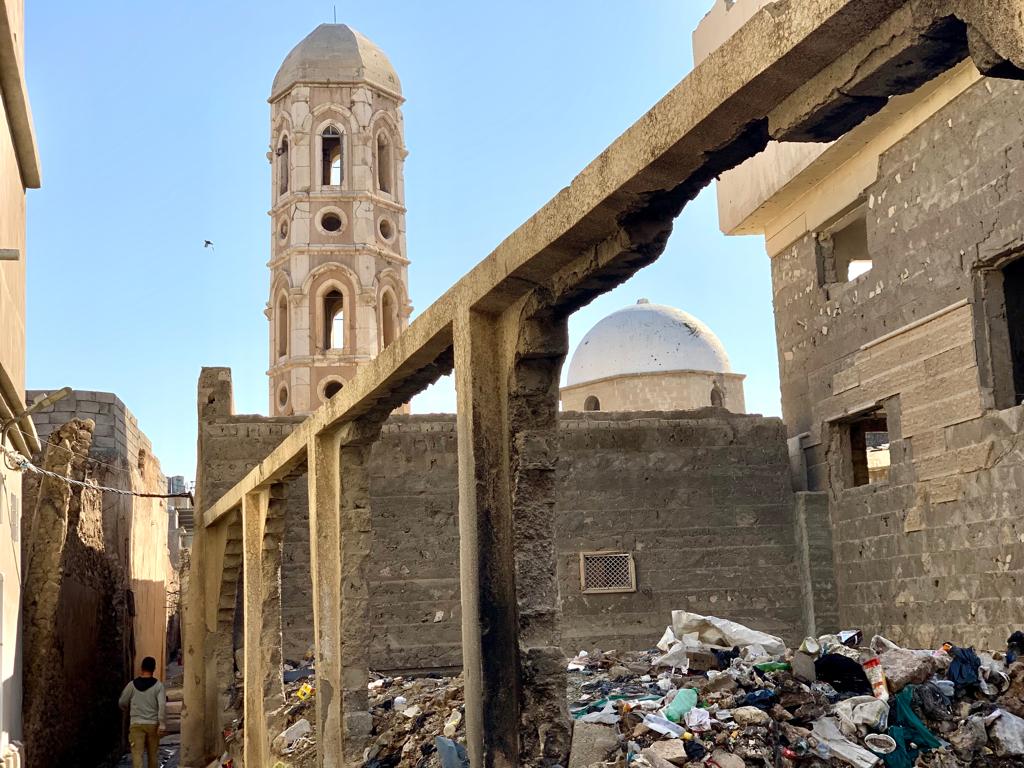
He points to the northern part of Mosul where the Mar Qorqis Church is perched on a hill. He expresses his sadness, saying, “It is closed, and there are no longer any worshipers from the surrounding neighborhoods who visit it.” He proceeds with his car towards the severely damaged right side of the city, approaching the location of the Clock Church, which is currently being restored. He sadly remarks, “I don’t know anyone who has returned to the old city, where Christians used to reside in nearly every neighborhood.”
Militias succeeding ISIS
Yasser Bakhtiar Zaki, a researcher in Iraqi affairs, links the non-return of many Christians after the liberation of their areas from ISIS between 2016-2017 to the presence of Shia Popular Mobilization Units (PMU) militias in the Nineveh Plain and imposing their absolute authority in the area, instead of the Kurdish Peshmerga forces that withdrew in 2014.
The Patriarch of Chaldean Catholics, Cardinal Louis Raphael Sako, expressed his concern about the future of the Christian presence in Iraq. He stated that after eight years of displacement from their areas, they feel disappointed and lack a minimum level of citizenship.
As a result, families who had recently returned after years of displacement are now being forced to flee once again according to him. The Cardinal raises important questions: Will there be a change in how Christians are perceived? Will they be granted equal citizenship rights, especially considering their status as the second celestial religion in Iraq? Will they receive fair treatment after enduring various forms of harassment and violations? Moreover, the Cardinal wonders if the proposed political, legislative, and institutional reforms, advocated by Sayyid Muqtada al-Sadr bloc, the Kurdistan Regional Government, and other political groups, will encompass the inclusion of Christians, Yazidis, and Mandaeans—the indigenous people of Iraq whose loyalty lies with the country, even those who were compelled to leave?
Sako provides further clarification, “Christians are experiencing a state of frustration due to unjust personal status laws, such as the forced conversion of minors and individuals who were coerced into Islam by Al-Qaeda or ISIS under the threat of death.”
And he added, “Who will protect peaceful Christians loyal to their homeland if the state fails to do so? These are painful violations that have repercussions on Iraq’s reputation. With great sorrow, I say: If you do not desire our presence as equal citizens in our own country, then tell us honestly, so that we can address the matter before it is too late.”
The situation on the ground reflects the prevailing frustration. Reverend Raed Adel, who oversees the Syriac Catholic churches in Mosul, the capital of Nineveh province, states that only 60 to 70 Christian families, totaling less than 150 individuals, have returned to the city following its full liberation in July 2017.
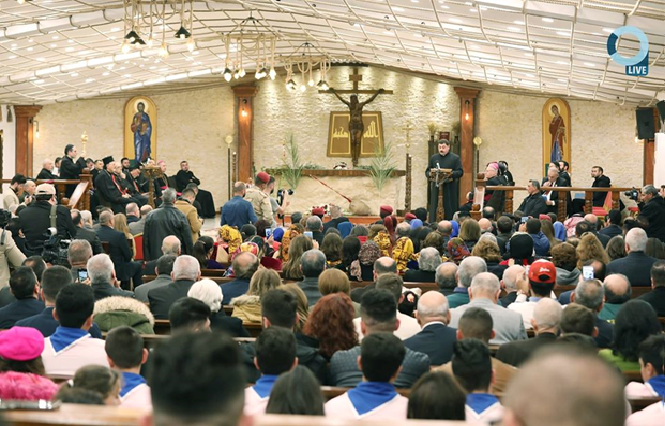
He also points out that there were 35 churches and monasteries in Mosul, all of which were either completely or partially destroyed during the period of ISIS control or the liberation war of the city. Many of them have been rebuilt, while others are currently under reconstruction. He explains that churches such as Al-Bishara, St. Thomas, and St. Paul are now open and welcoming Christians from both outside and inside Mosul to perform their rituals there.
Fadi Sabah, a government employee in his forties who closely monitors the diminishing Christian population, explains, “Although the absence of Christians may not be readily apparent in Baghdad or even Mosul, where their neighborhoods remain deserted and their churches lack worshippers, it becomes strikingly evident in their historic towns located in the Nineveh Plain.”
He points his finger at a map showing their distribution on his computer screen and continues, “When you visit these areas, you find them nearly empty, with closed houses’ doors and deserted markets. Entire neighborhoods lack the presence of mothers sitting on their doorsteps as usual, and no children are playing in the streets.”
He continues while pulling out photos from a drawer in his office, saying, “It’s not just about Nineveh. Take a look at these pictures of Christian neighborhoods in Dohuk and Zakho. They too have become deserted, despite having relative security and some economic stability.” He pauses, deep in thought, before cautiously adding, “Every day, Christians are leaving, and no one is coming back. In a few years, we won’t have a presence here anymore.”
The Yazidis: Acts of Killing and genocide crimes
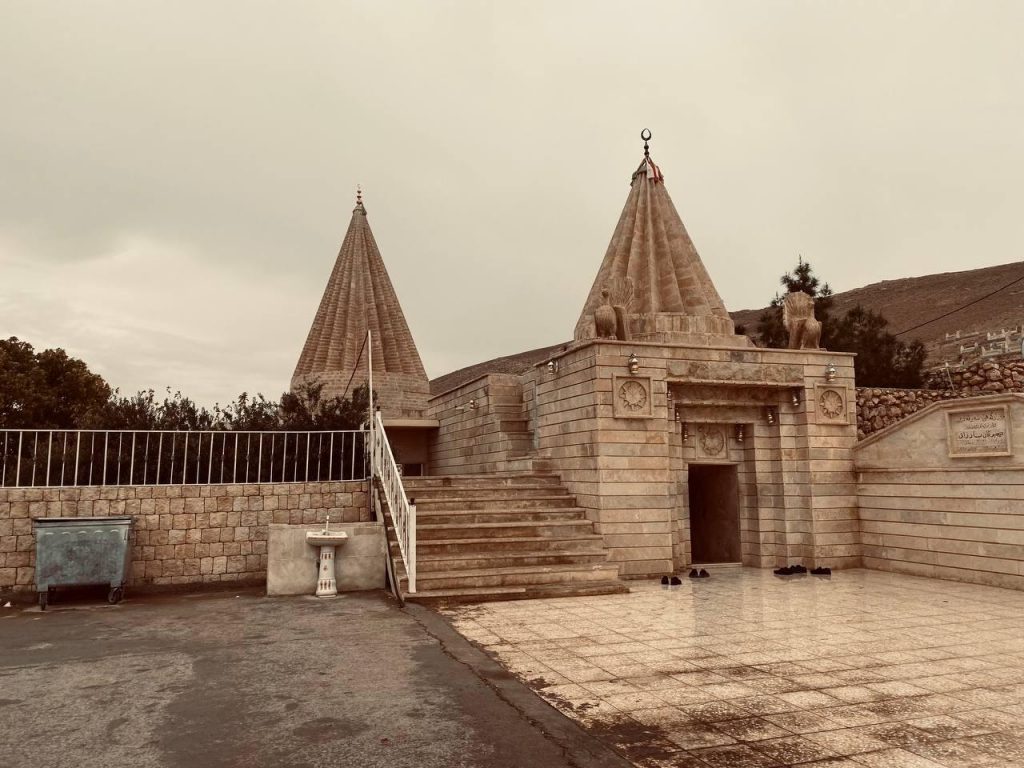
Before the fall of the previous Iraqi regime in 2003, approximately 550,000 Yazidis were living in Iraq, dispersed across the districts of Sheikhhan, Sinjar, Ba’aj, and the Ba’shiqa sub-district in Nineveh, as well as in the Kurdistan Region.
They embrace their unique monotheistic religion, which is non-proselytizing, and they make pilgrimages to the shrine of Sheikh Adi in the Ain Sifni area, located 60 kilometers north of Mosul. They have been treated as infidels by armed religious groups that emerged in Iraq after 2003, and many of them have been assassinated, leading to their retreat in their towns and even in cities within the Kurdistan Region, after abandoning their businesses and properties in the other Iraqi cities.
Researcher and minority affairs specialist, Manaf Raouf, states that Al-Qaeda and Ansar al-Islam terrorist groups would kidnap and kill Yazidis based on religious fatwas. On August 14, 2007, a massive explosion occurred in the towns of Tall Azir and Siba Sheikh Khidir in Sinjar, resulting in the death of 796 Yazidis and the injury of 1562 individuals. This incident marked one of the deadliest attacks in Iraq. Before that, in April of the same year, 21 Yazidi textile factory workers in Mosul were killed by an armed group. The workers were forced to disembark from buses that were transporting them to their residential areas in Ba’ashiqa (20 kilometers east of Mosul), and they were shot at. This created tremendous terror among the Yazidis in Mosul and compelled the majority of them to leave the city.
Researcher Manaf adds that the Islamic State of Iraq, which was declared in 2006 and later transformed into the Islamic State of Iraq and Syria (ISIS) in 2009, followed the same policy and attacked Yazidi areas in August 2014, and committed massacres against them.
He continues, “The extremist groups that had the upper hand moved freely, selecting their victims and executing their judgments in the center of cities. Some bodies would remain on the streets for days because members of Al-Qaeda and later the Islamic State would place explosive devices under those bodies and detonate them as soon as Iraqi security forces, American forces, or ambulances arrived.”
On August 3, 2014, ISIS militants attacked the city of Sinjar. Similar to what happened when the organization took control of Mosul after Iraqi forces withdrew and handed over the areas without resistance. Similarly, the Peshmerga forces that were responsible for the region also withdrew, leaving only Yazidi civilians in the face of ISIS militants.
Those who were able to escape sought refuge in Sinjar Mountains, and the majority of them arrived, after weeks and through dangerous routes, to displacement camps in the Kurdistan region, which accommodated 139,719 of them.
Statistics from the Office of Kidnapped Yazidis Rescue, supported by the United Nations, indicate that 1,293 Yazidis were killed during the ISIS invasion of Sinjar. The number of kidnapped persons reached 6,417, with the majority being females. By 2022, 3,530 of them had been liberated, while the fate of 2,887 remained unknown, and the number of orphaned children reached 2,745.
ISIS destroyed 73 Yazidi shrines and left behind 85 mass graves, which will require years of work to open and identify the victims, according to Yazidi activist and journalist Maysar Adani. It also left an enduring wound, which is the wound of the kidnapped women and men, whose families continue to search for them everywhere.

The conflicts in Sinjar and demographic changes in Sheikhhan
In 2022, the Iraqi Ministry of Migration and Displacement closed the majority of displaced person camps across Iraq, but it maintained the camps for Yazidis in the Kurdistan region due to their inability to leave and return to their areas in Sinjar, despite more than seven years have passed since its liberation. Yazidi officials confirm that two-thirds of the displaced people from Sinjar have not returned, while the International Organization for Migration states that over 193,000 residents of the area as a whole are still displaced.
Researcher Adel Kamal identifies several factors that have led to the majority of Yazidi displaced individuals choosing not to return to their hometowns. These factors include the failure of the central government in Baghdad to reconstruct their destroyed areas, ongoing conflicts between various militias and armed forces with different affiliations in Sinjar, the lack of essential services, and the absence of economic opportunities to sustain their livelihoods. Collectively, these circumstances have forced many Yazidis to seek migration as a result.
Yazidi organizations reveal that around 120,000 Yazidis have migrated to Europe during the past nine years. These individuals have become a source of hope for their displaced relatives, who seek to reunite with them through family reunification programs or irregular migration routes.
However, Yazidi researcher Hasso Hormi provides other reasons for the Yazidis not returning to their historical areas. He states, “The genocide against the Yazidis is still ongoing, as there are more than 2,800 missing individuals whose fate remains unknown. Additionally, Yazidi areas are not managed by the Yazidis themselves, and they demand autonomous administration for their regions. Furthermore, the absence of the Yazidi religious authority’s role in encouraging people to return, internal political problems among the Yazidis themselves, and the lack of hospitals, schools, institutes, colleges, and job opportunities in their areas in Sinjar compared to what is available in the Kurdistan Region. Therefore, they choose to remain in the camps.”
He also states, “85% of Yazidis live in camps surrounded by a loss of trust in others and a diminished sense of belonging. They always say that ‘Yazidis are a targeted project as long as they remain in Iraq.’ Therefore, their thinking is always directed towards migration.”
Hormi, who heads the Yazidi Organization for Genocide Documentation, emphasizes that changing the Yazidi individual’s mindset requires the collaboration of friendly regional and Arab countries, as well as persuading the United Nations to systematically rehabilitate the region, beginning with the individuals themselves and extending to the infrastructure.
He holds the belief that the immense pressures and problems faced by the Yazidis have resulted in various social issues, including a rise in suicide cases and the prevalence of early and child marriages.
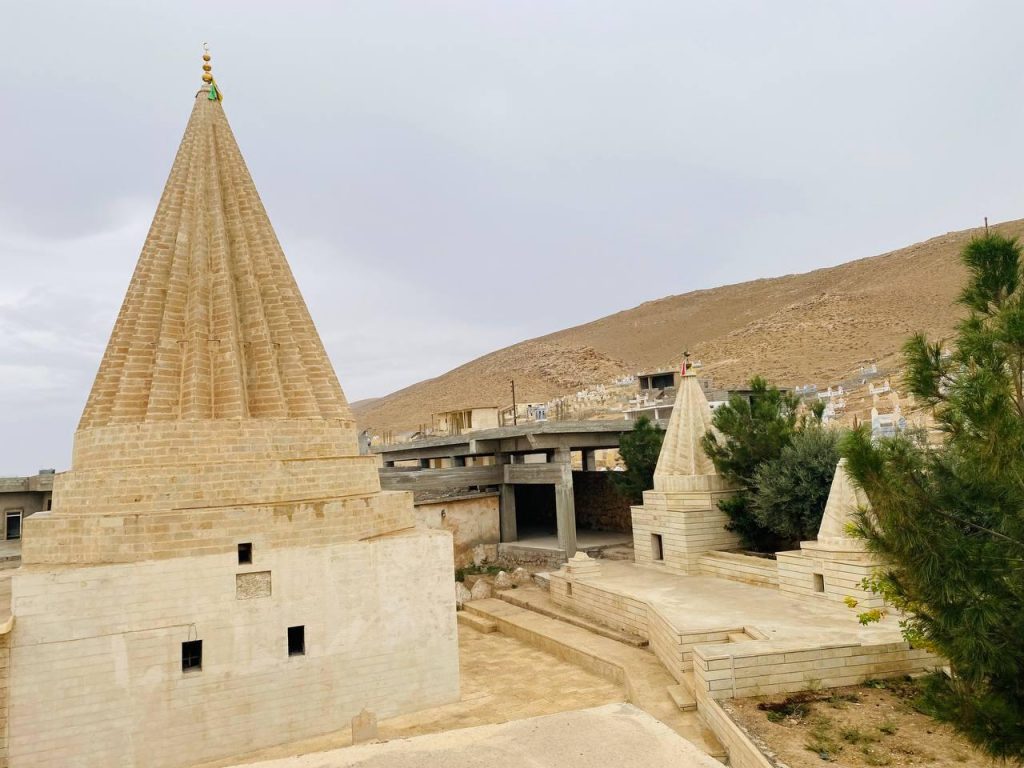
The main reasons for not returning primarily revolve around Sinjar in western Nineveh and its complexes, which used to accommodate more than 200,000 Yazidis. However, there are additional reasons for not returning to the Ba’ashiqa and Bahrizan districts in northeastern Nineveh, mainly due to concerns about ongoing demographic changes in those areas. According to Yazidi writer Khader Khalat, “Official positions in most government institutions are now held by non-native residents, as well there is a worrisome trend of other groups infiltrating and acquiring agricultural and residential lands in the vicinity of Ba’ashiqa and Bahrizan, outlining the forthcoming demographic changes.”
He points out that “fear drives many Yazidi residents to sell or rent out their homes located on the outskirts of the two towns to buy or rent homes in the heart of the community. It is a process of seeking refuge and seeking solace within the original society. However, others prefer to migrate far away.”
The Shiite Shabak-affiliated 30th Brigade of the Popular Mobilization Forces (PMF) controls the Nineveh Plain and is accused of causing demographic changes in the area by preventing non-Shabak property owners or residents of the plain from utilizing or disposing of their properties. However, brigade leaders deny these accusations and claim that their actions are by Iraqi law, aiming to prevent demographic changes in an area predominantly inhabited by the Shabak community.
The signs of demographic change in the historical areas where the Yazidis used to reside are evident, as stated by D.M., a journalist from the region. In the Sheikhhan district, located 60 kilometers north of Mosul, significant demographic changes have occurred. Historically, it was the center of the Yazidi emirate and had a predominantly Yazidi population with a Christian presence. The district housed prominent Yazidi shrines like Sheikh Shams, Sheikh Hantoush, and Sheikh Adi, as well as several historical churches. However, today it has become predominantly Muslim, with an increasing number of Kurds residing in the area. In recent years, there has been an influx of Shabak individuals who, due to their economic strength, are purchasing land in the district.
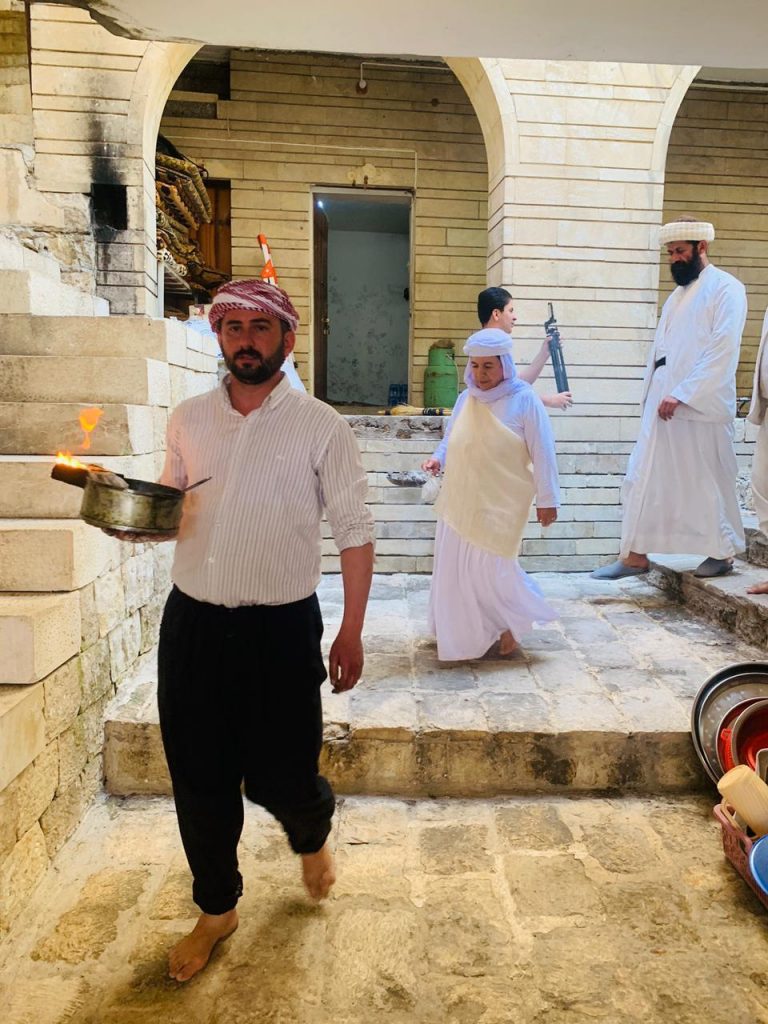 The Shabak Community and Self-Defense Measures
The Shabak Community and Self-Defense Measures
The Shabak community, a Muslim minority in Iraq, consists of approximately 400,000 to 450,000 individuals. They speak the Shabaki language, and approximately 70% of them follow the Twelver Ja’fari sect of Islam, while the remaining 30% are Sunni.
The Shi’a Shabak community has several sacred religious shrines in the Nineveh Plains, including the shrines of Imam Reda and al-Abbas, as well as the mausoleum of Imam Zain al-Abidin. These sites were destroyed by ISIS militants following their control over Nineveh.
Unlike other minorities, the Shabak people are only present in Iraq. According to journalist Younis Al-Agha, the majority of them live in over 60 villages distributed among six administrative units located in the districts of Tall Kayf, Mosul, and Hamdaniya.
They used to live in around 12 residential neighborhoods on the left side of Mosul city. However, they were repeatedly targeted by Al-Qaeda, Ansar al-Islam, and later the Islamic State group because of their Shia affiliation. As a result, many of them were compelled to flee to villages in the Nineveh Plain between 2004 and 2006.
Following the ISIS attack on their regions in the Nineveh Plain in June 2014, the Shia Shabak community was forced to flee to the Kurdistan Region. During this period, the members of the extremist group seized their belongings and properties, both movable and immovable.
According to Younis Al-Agha, the Shabak community is marginalized and deprived of any significant roles in the government, which he attributes to the prevailing political quotas. He points out that they have no ministers, deputy ministers, or directors-general. “We also lack ambassadors, military brigade commanders, and even a representative in Nineveh Province. It seems that we are perceived as second-class citizens if considered citizens at all”.
Researchers hold different opinions about the origins of the Shabak people. Some researchers believe they are of Kurdish descent, while others argue that they have Arab roots. Another group associates them with the Turkmen community, and there is also a theory linking them to Iran, suggesting they may be remnants of Nadir Shah’s unsuccessful campaign to conquer Mosul in 1743.
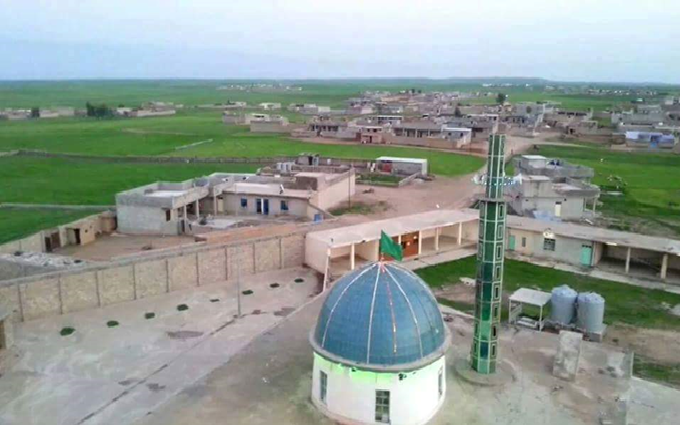
According to writer and historian Aziz Hani Khudair, the Shabak people are divided into two ethnic groups, Kurds and Arabs, and two religious groups, Shia and Sunni. He further explains that after 2003, they faced targeted attacks by armed groups, resulting in the assassination of many individuals and the destruction of their villages through truck bombings. In 2014, a significant number of Shabak people were forced to flee to Shia cities in the south, such as Najaf and Karbala, while some Sunni Shabak individuals sought refuge in the Kurdistan Region.
Following the liberation of the Nineveh Plain from ISIS in 2016, the Shia Shabak community returned to their villages, determined to prevent a recurrence of past events. Dr. Hanin Qado, a former member of Parliament, assumed leadership of the 30th Brigade within the Popular Mobilization Forces (PMF), primarily composed of Shia Shabak fighters. Their number has grown to approximately 1,500 fighters.
After his death in December 2020, his brother, Waed Qado, who holds German citizenship, took his place. However, on July 19, 2019, the U.S. Department of the Treasury blacklisted Waed Qado and imposed sanctions on him. He was accused of being involved in human rights violations, including the suppression of minorities.
Researcher Georges Touma states that the Peshmerga forces had been in control of the Nineveh Plain before 2014 when it was seized by ISIS. They regained control after its liberation in 2016 but relinquished it again in October 2017, allowing the Popular Mobilization Forces (PMF) to take charge, including the 30th Brigade as part of their operations there.
Touma believes that the main mission of the 30th brigade is to protect the Shabak people and their villages from any targeting. Additionally, they are tasked with preventing anyone from outside the Nineveh Plain from owning, exploiting, or dealing with properties located in the area.
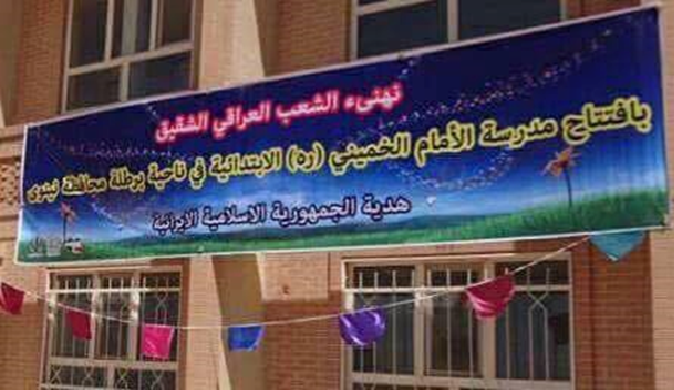
In 2022, Waed Qado, Commander of the 30th Brigade, took measures to prohibit the municipality of Mosul from extending the city’s basic layout towards the neighboring Nineveh Plain. His decision was motivated by the aim of safeguarding the Shabak people and preventing any demographic alterations that could negatively impact them.
Touma points out that the 30th Brigade “safeguards Iranian influence in the Nineveh Plain.” Additionally, an elementary school named after the late Iranian leader, Khomeini, was inaugurated in the Bartella district. Furthermore, the commander of a battalion within the brigade, Hassan Al-Sultan, is considered a representative of the Iranian leader Khamenei in the Nineveh Plain.
According to retired police chief Ghazi Fawaz, the Shabak people have the right to self-protection. He recognizes the many tragedies they have faced since 2003 but cautions that the policies being implemented by the leaders of the 30th Brigade will have detrimental effects on the future of the Shabak community.
He explains, “The Shabak people are peaceful, and their relationship with the residents of Mosul was good. However, tensions have arisen today due to their control over certain sensitive public positions and the practices carried out by the brigade members, such as preventing thousands of citizens from utilizing their properties in the Nineveh Plain and seizing properties belonging to Christians. This will harm the Shabak community as a whole once the power of the Popular Mobilization Forces diminishes.”
Rabee Yahya Mohsen, a Shabak activist, denies that the Shabak have any aggressive intentions towards any other group. He says, “All we want is to live in peace and not wake up to the sounds of explosions, mourning the deaths of our children for no reason.”
According to the journalist (D.M.), the Shabak community, unlike other Iraqi minorities, has managed to maintain and even expand their presence in their respective areas. Unlike other groups, they have not faced significant displacement issues. The displacement of some Shabak Shia individuals to southern regions such as Najaf and Karbala in 2014 has strengthened their political and on-the-ground influence in the Nineveh region.
Yarsanism: A Persistent Lack of Recognition and Repeated Targeting
Yarsanism, also known as Ahl-e Haqq, is a religious belief system that is prevalent in several countries in the Middle East, such as Iran and Iraq. Although they share ethnic ties with the Kurds, Yarsanis have their own unique religious beliefs and should not be mistaken for Muslims, as some in Iraq might assume. This distinction arises from their ongoing efforts to assimilate into their surroundings, driven by a fear of being targeted.
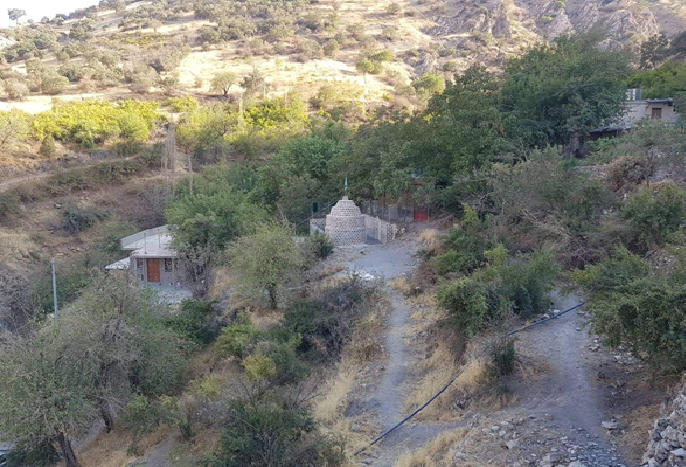
As is the case with other minorities, there is no accurate statistical data regarding the number of Yarsanis in Iraq. However, unofficial sources have estimated their population to be around 120,000. They are present in various regions, according to activist Rajab Asmat Kakai, including Diyala, Kirkuk, Nineveh, Sulaymaniyah, and Baghdad.
Rajab further highlighted that Yarsanism, also known as Yarsan, is a monotheistic faith that emphasizes the unity of God and the eternal essence of the soul, manifested through various entities known as the “Journey of the Soul.” Yarsan followers observe a three-day fasting period and engage in two daily prayers, one at dawn and the other at sunset. Additionally, they undertake pilgrimages to the shrine of Sultan Ishak, situated in the village of Radyur in Hawraman Lohoun, which is located in Iran near the Iraqi border.
The Yarsan community has several sacred shrines in Iraq, with the most prominent and revered one being Sayyid Hayas located in the village of Wardak, east of Mosul. It was destroyed by elements of Al-Qaeda in late 2004 but was later rebuilt. However, it was once again targeted and destroyed by ISIS in June 2014. It was reconstructed once more and reopened in late 2019.
For 19 years, the Yarsan community, especially in the villages of Kirkuk and Diyala provinces, which are areas of conflict between the governments of Baghdad and Erbil, has faced repeated targeting. They have been subjected to car bombings, armed attacks, killings, and kidnappings by extremist groups. As a result, they have been forced to leave many of their villages that they were unable to protect because they didn’t have an armed militia. They have sought refuge in Kurdish cities, where they have assimilated socially and culturally.
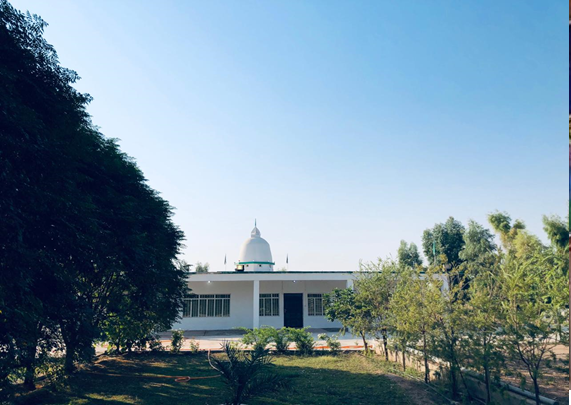
Rajab expresses deep concern about the future of Yarsan followers due to several reasons. Firstly, there is a lack of recognition of their religion and their unique culture in the Iraqi constitution. Secondly, they face security threats due to the presence of remnants of ISIS near their villages. Additionally, ongoing disputes between Baghdad and Erbil over the administration of their areas exacerbate their situation. These factors compel them to either flee or pretend to be Muslims to protect their lives.
He also emphasizes the efforts of the Yarsan community to obtain representation in local governments or the Iraqi Council of Representatives to create the necessary influence and pressure to protect and preserve their identity. However, they also acknowledge that first and foremost, they need recognition of the existence of the Yarsan religion.
This recognition is very challenging, as stated by historian Abdul Hadi Al-Shakib, who affirms that minority groups belonging to “non-celestial” religions, which are perceived as infidel not only by the governing authorities but also by the surrounding society, face significant hurdles in obtaining recognition.
He further explains, “The situation became more complex after 2003, particularly with the emergence of armed extremist groups that targeted and abducted them, accusing them of disbelief. These groups aimed to instill fear and establish their control over the minorities’ territories, including the Yarsan community, whose villages and shrines were destroyed in the Nineveh Plains, and their properties were seized after 2014.”
As a result, the Yarsan community resorts to concealing their beliefs and practicing their religious rituals in complete secrecy. They adhere to what is known as “taqiya,” which means refraining from openly practicing their rituals to protect themselves from being targeted. However, the distinctive feature of their men, characterized by their prominent mustaches, made it easier for armed groups to identify them.
The Yarsan areas have been subjected to numerous attacks in the years following their liberation from ISIS. The terrorist organization took advantage of the weak security presence in these areas and carried out attacks that resulted in the deaths of 16 individuals, according to Yarsan sources. This prompted their representatives to demand the formation of a special force dedicated to their protection or the assignment of a joint force from the federal government and the regional government, ensuring their strong presence in their regions to safeguard it. However, these demands have yet to be met.
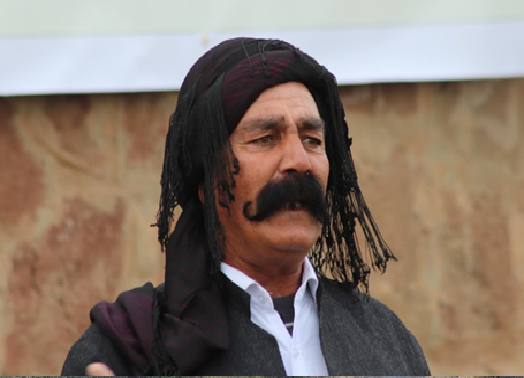
Alongside the security challenges, the regions with a significant Yarsan presence are confronted with conflicts between Kurds, Arabs, and Turkmen over the ownership of agricultural lands. Moreover, they also grapple with the issue of insufficient public services.
The decision of Yarsan individuals to leave their areas of concentration and move to major cities effectively means their assimilation into societies where Islam predominates religiously and Kurdish identity prevails nationally. This assimilation poses future risks to the existence of the Yarsan community, according to prominent Yarsan figures who shared their concerns with us while requesting to remain anonymous.
The Mandaean Sabians: on the brink of extinction
The Mandaeans, a monotheistic religion once widespread in central and southern Iraq, practice purification rituals with water. Their sacred sites, known as “Manda,” are located near riverbanks for baptism ceremonies. They also adhere to a sacred book called the ” Ginza Rabba.”
There is no statistical data available regarding their numbers, but individuals affiliated with the community estimate their population to have been around 100,000 people before 2003. However, the number has decreased by approximately 80% in the past two decades, with the majority of them migrating to European countries to escape targeting and social discrimination. Currently, their population is estimated to be between 15,000 and 20,000 individuals only.
They were allocated one seat in the Iraqi Parliament through the “quota” system, which eight candidates competed for in the 2021 elections.
There is a lack of education and awareness about different religions and Iraqi communities in Iraqi schools. This has resulted in the spread of false information and misconceptions about these groups, including the Mandaeans. There is a misunderstanding of their beliefs in society, leading to a distorted image of them, particularly on social media, where they are unjustly accused of practicing sorcery. The leader of the Mandaean community, Sheikh Satar Jabar Al-Helo, strongly denies these accusations and emphasizes that such practices are strictly prohibited according to their beliefs.
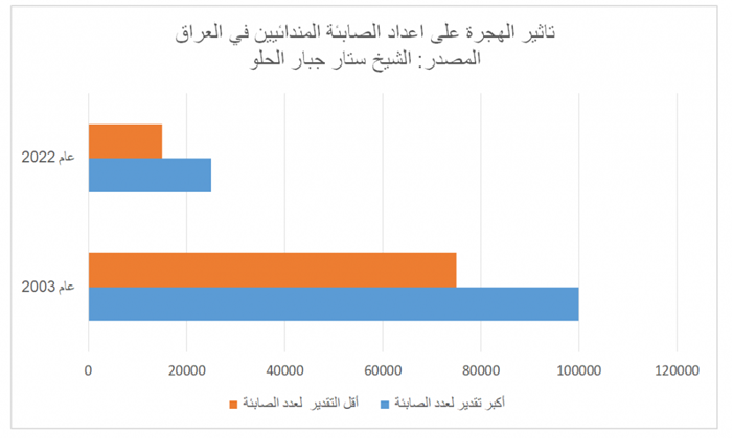
Sheikh Satar Jabar Al-Helo urges the security forces, government authorities, and society to prevent the association of the Mandaeans with acts of sorcery. He emphasizes the importance of holding accountable those who deceive and exploit others by falsely claiming to be Mandaeans, both financially and morally. He firmly denies any connection between the Mandaeans and sorcery.
According to the academic researcher, Abdul Jabbar Ghazi Nuh, the Mandaeans are facing a serious threat to their security and safety due to these accusations. As a result, they have been forced to migrate, putting their longstanding presence in Iraq, where they have lived for centuries, in jeopardy.
Nuh explains: “In the aftermath of the US occupation of Iraq in 2003, as the authority of the Iraqi state weakened, religious minorities found themselves without adequate protection. Rumors and misconceptions surrounding their beliefs increased. Various armed religious groups, including terrorist organizations like Al-Qaeda and ISIS, as well as state-affiliated groups, took advantage of these circumstances to target them.”
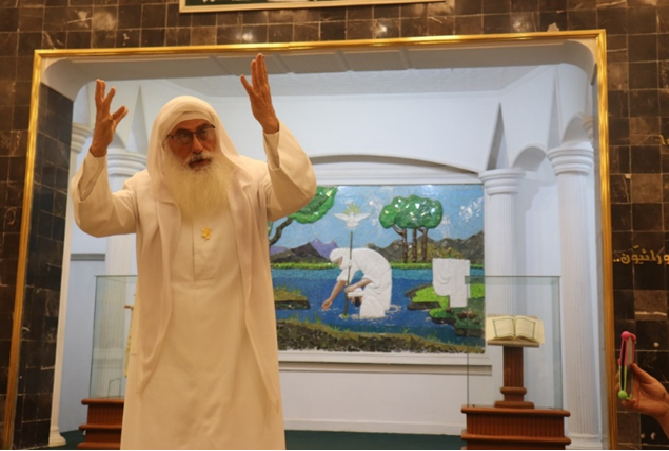
Safeguarding Minorities and Ensuring Survival Opportunities
According to researchers, religious and ethnic minorities are at risk of disappearing from their historical land due to continuous emigration. This is primarily attributed to the absence of a citizenship-based state and the prevalence of sectarianism, where minorities are not treated on an equal footing with Arabs, Kurds, or Turkmen. Additionally, the neglect of these minorities by successive governments and their persecution by extremist religious groups have further compounded their challenges.
Louis Marqus Ayoub, a founding member of the Iraqi Minorities Alliance, puts forth a set of conditions to halt the emigration of minorities. These conditions entail the establishment of a dedicated reconstruction fund by the government to compensate minority areas for the losses they suffered during the ISIS invasion in 2014. Additionally, minorities should be granted veto power over laws and decisions passed by the Parliament that affect their religious, cultural, linguistic, and intellectual rights.
He also proposes that members of minorities who are affiliated with the Iraqi army and police take charge of the security file in their areas, rather than relying on the Popular Mobilization Forces or forces aligned with any political entity.
The Iraqi Minorities Alliance insists on the need for granting them a form of self-administration that enables them to govern their regions. This would involve creating investment opportunities specifically for their children and those who have migrated from their communities.
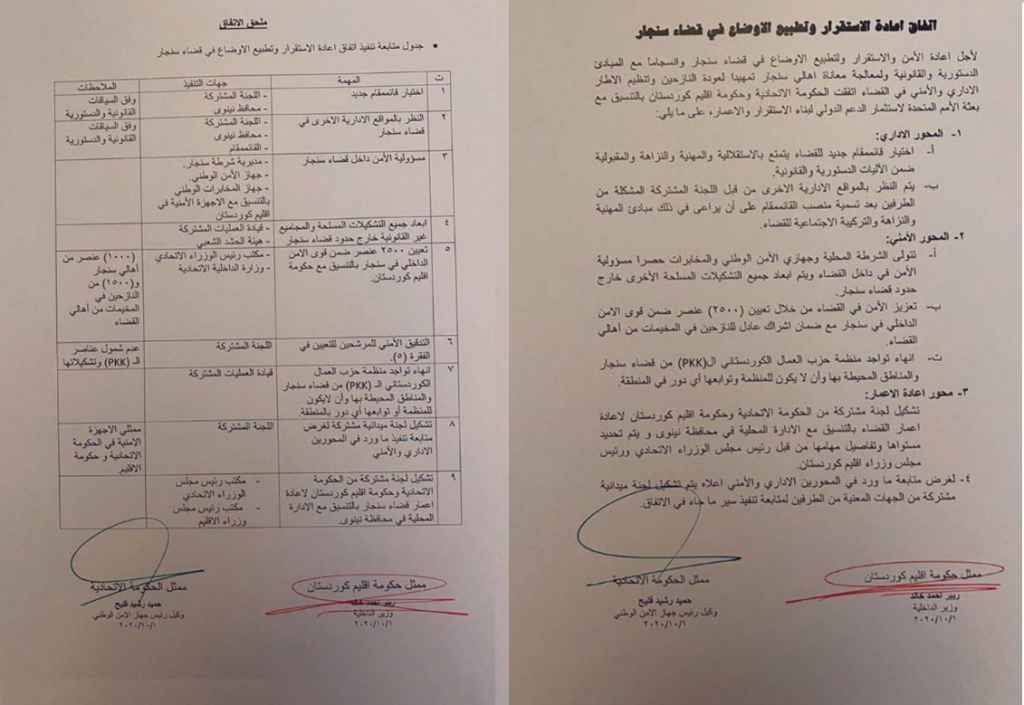
The alliance advocates for ensuring that areas inhabited by Christians and Yazidis are free from Shiite religious rituals and the construction of Shiite religious centers known as Hussainiyas. It also emphasizes the implementation of the compensation law to address the shortage of job positions for Christians, with a requirement that only members from their community are appointed, as mandated by the law.
Additionally, they propose amending Article 26 of Law No. 3 of 2016, also known as the National ID Card Law, which it views as containing discriminatory provisions against non-Muslims, particularly Christians, Yazidis, and Mandaeans. Ayoub argues that this article forces minor children, whose parent has converted to Islam, to be registered as Muslims in the civil registry. It also allows non-Muslims to change their religion while prohibiting Muslims from doing so.
In addition, he demands to enact the Components Law by Article 125 of the Constitution, which states, “This Constitution guarantees the administrative, political, cultural, and educational rights for different nationalities such as the Turkmen, Chaldeans, Assyrians, and other components, regulated by law.”
Ayoub expresses doubt regarding the return of migrated minorities or the reduction of their emigration unless these conditions are fulfilled. This skepticism arises from the persisting extremism in Iraq towards non-Muslims, including Sunni Muslims, for approximately a year. Ayoub attributes this situation to the influence of radical Shiite Islamic parties loyal to the Iranian Wilayat al-Faqih system.
Researcher Adel Kamal highlights the importance of implementing security agreements between the governments of Baghdad and the Kurdistan Region, especially in the areas where most minorities are concentrated. One such agreement pertains to Sinjar, known as the Agreement on Stability Restoration and Normalization of Conditions in Sinjar, signed in October 2020. However, to date, this agreement has not been effectively implemented.
Implementing these agreements, as Kamal suggests, would encourage the displaced people to return and prevent further emigration among the Yazidis. Additionally, it would facilitate the reconstruction of the area, which has been hindered by the presence of multiple armed groups, ongoing conflicts, and political divisions.
Kamal emphasizes the importance of not prioritizing one minority over another in the Nineveh Plains. He highlights that the Shabak community, which is predominantly Shia, receives significant support from the Iraqi government, enabling them to have their militias and exert absolute authority over the Nineveh Plains. This comes at the expense of other minorities in the region, including Christians, Yazidis, and Kakais.
This investigation was produced under the supervision of NIRIJ Network and with the support of NAWA Media. The condensed version of the investigation was published on the Daraj website.
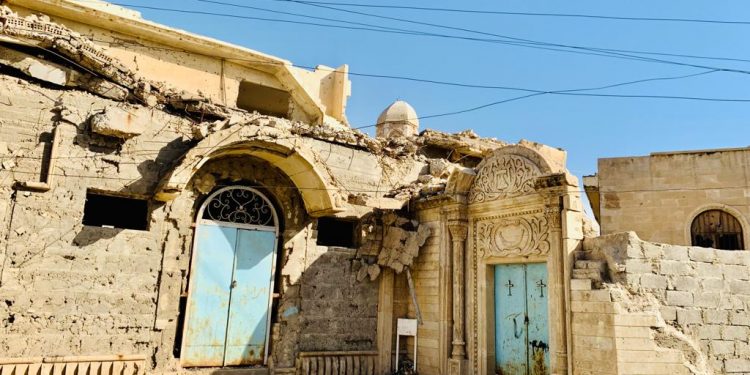









 The Shabak Community and Self-Defense Measures
The Shabak Community and Self-Defense Measures











